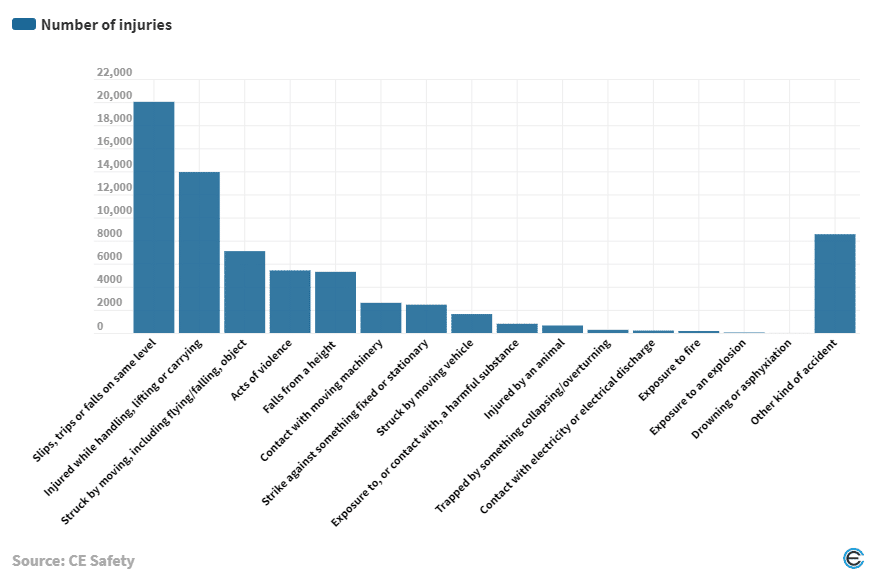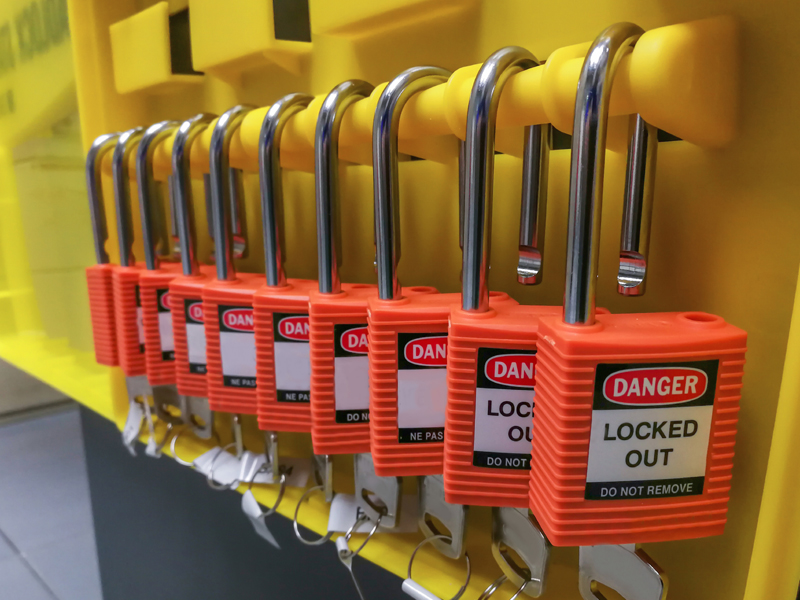
It is vital for a company to do everything in its power in order to avoid workplace accidents and injuries.
In failing to protect their workers, businesses can cause a great deal of pain and distress to affected employees and their families.
In this article, here at CE Safety we utilised data collected by the UK’s Health and Safety Executive under RIDDOR (the Reporting of Injuries, Diseases and Dangerous Occurrences Regulations) between the financial years 2014/15 and 2018/19.
We examined which industries see the highest numbers of workplace accidents and found out which are the most common types of non-fatal injury in any industry.
Industries ranked by number of workplace accidents
According to HSE statistics, the combined fields of public administration and defence, compulsory social security, education, human health and social work activities sees the highest number of non-fatal workplace injuries of all kinds, with 20,961 reported.
The industry with the second highest number of injuries is manufacturing. This field sees 12,151 injuries reported.
Next up is another collection of fields – wholesale and retail trade, repair of motor vehicles and motorcycles, accommodation and food service activities. These industries combined saw 11,852 injuries in the five years over which the data was collected.
Transportation and storage reported 9,780 cases. There is another significant drop at this point, with the construction industry seeing 4,872 injuries between 14/15 and 18/19.
4,374 injuries were reported by the combined fields of information and communication, financial and insurance activities, real estate activities, professional, scientific and technical activities and administrative and support service activities.
Water supply, sewerage, waste management and remediation activities with a combined total of 2,023 injuries.
Another broad field, covering arts, entertainment and recreation, other service activities, activities of households as employers, undifferentiated goods-and services-producing activities of households for own use and activities of extraterritorial organisations and bodies, reported 1,845 injuries.
Agriculture, forestry and fishing reported 831 injuries in five years.
On the next step down is the electricity, gas, steam and air conditioning supply industry, with just over 540 injuries. This is closely followed by mining and quarrying, with 232.
Most common workplace injuries
After summarising the industries in which employees are most likely to experience a workplace injury, we explored the most common types of injury across all fields.
The most likely injury in any industry is one caused by a slip, trip or fall on the same level. 20,022 cases of this kind were recorded in the five years covered by the HSE’s data.
Handling, lifting or carrying injuries, are numbering 13,940. Injuries caused by an individual being struck by a moving, flying or falling object are the next most common, numbering at 7,089.
Following this are injuries caused by acts of violence towards or between employees. This saw 5,422 injuries over the reporting period.
Falls from a height are very close behind in number, with 5,296 injuries of this kind reported. Contact with moving machinery was the cause of 2,615 injuries.
Next is a strike against something stationary. This resulted in 2,451 reported injuries, while an individual being struck by a vehicle resulted in 1,640.
Exposure to, or contact with, a harmful substance causes 800 injuries exactly. Injuries caused by animals are at 648, while injuries caused by being trapped by something that has collapsed or overturned numbered 273.
There were 211 cases caused by contact with electricity, or electrical discharge. Exposure to fire caused 174 workplace injuries and explosion-related injuries were reported 56 times.
Drowning or asphyxiation was the cause of just 14 workplace injuries, while miscellaneous other workplace injuries made up 8,557 of those reported.
Through the implementation of proper health and safety measures, the acquisition and use of correct protective equipment and the provision of thorough training to all relevant employees, businesses can avoid dangerous accidents and keep their workers safe.










